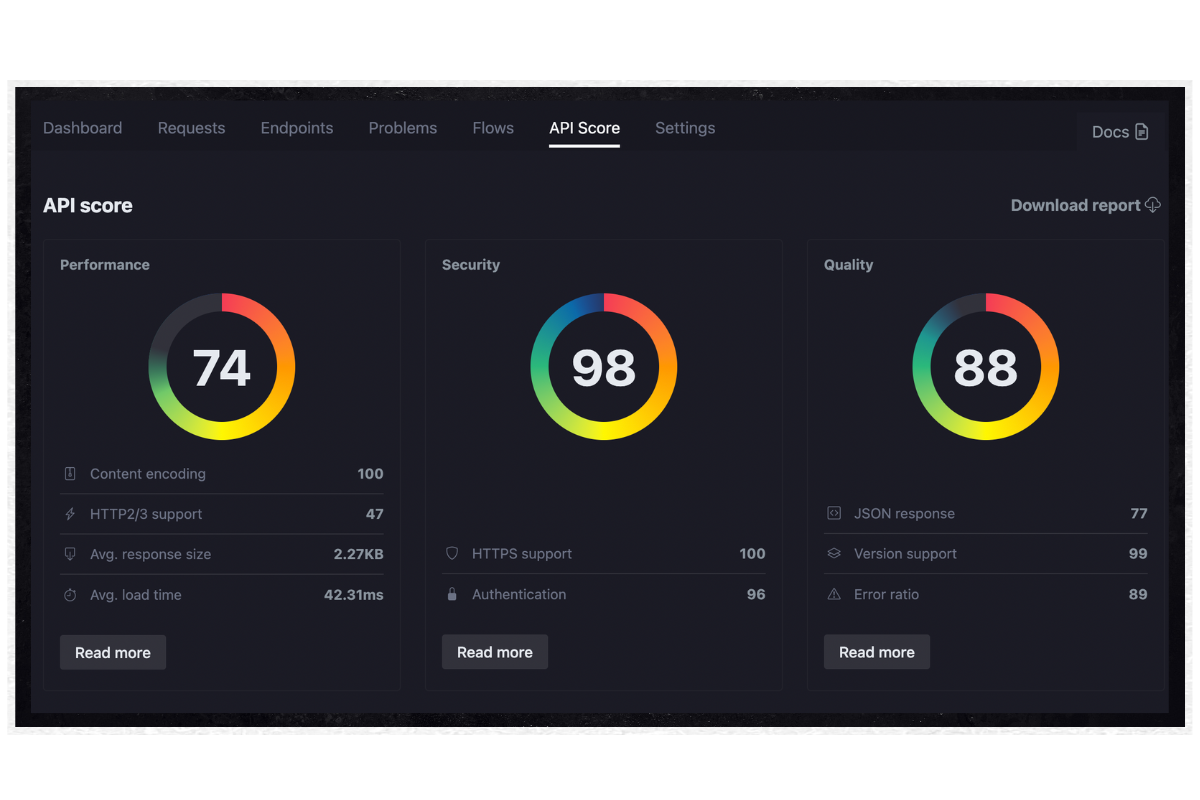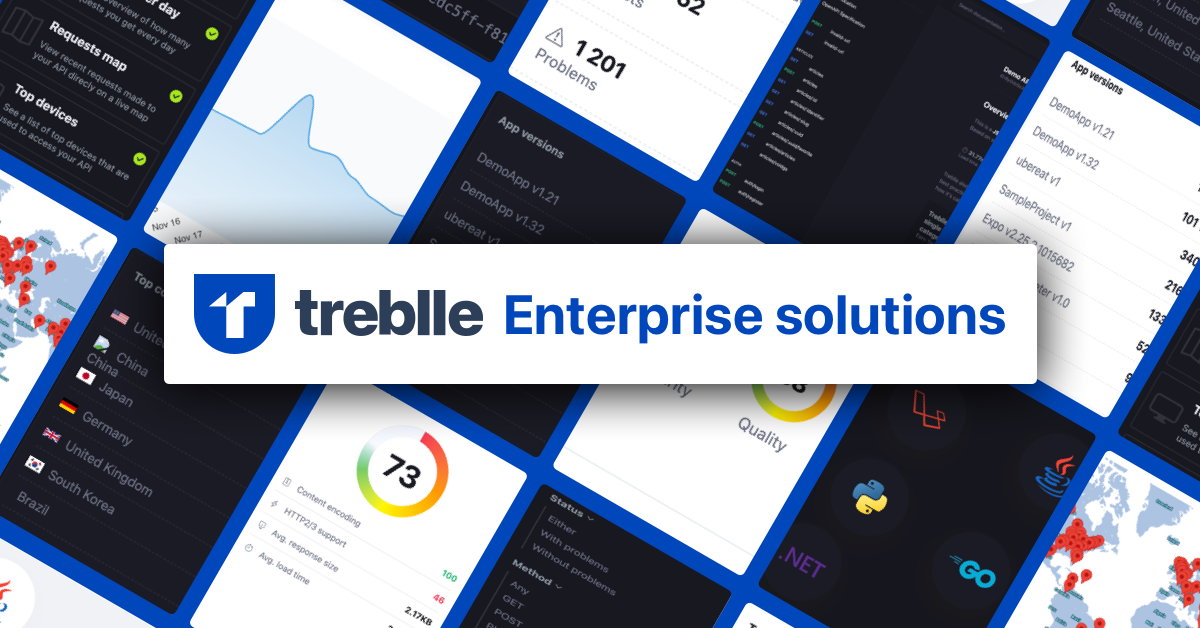API Governance | Dec 2, 2022 | 7 min read | By Treblle Staff

As your API grows, it becomes more difficult to track and manage the entire lifecycle. There are so many steps involved in building and managing an API that it can be daunting. Treblle, from its conception, tackles every pain point you might have in your API lifecycle from development to management and monitoring.
We could throw at you various marketing-sounding words and hope that they will persuade you, but rather than us saying something like "every hero needs a sidekick" let's look at what Treblle 2.0 actually brings to the table and what you can expect.
Treblle has been around for a year now. We've onboarded more than 13 thousand developers, and we are building a community around the platform. This is very important because it enables us to listen to suggestions, have meetings and receive feedback.
We've used all of that and worked hard for the past year to bring Treblle 2.0 to life. Our core features proved to be super useful to our users and what we did with v2.0 is expanding on what works and adding new features that complement existing ones.
As you may already know Treblle's core features are:

Benchmark your API
There are a lot of new features that came with Treblle 2.0, we don’t have time to go through all of them but we’ll point out the most important ones.
Alongside adding new features Treblle has a completely new look. We have a new website to go along with it and yes, we also have docs! We have also refreshed how pricing works, so now you get 250K requests on our free forever plan. We wanted to make sure you have enough time and space to test out Treblle and see the value it can bring you.
So, what else is new?
A completely customizable API dashboard gives you and your team all the insights you might need. From graphs that show requests per day/month/week, to a list of top countries your users come from to your most popular endpoints. It's literally a drag-and-drop. Just click on what you like and it’s on your dashboard. No SQL queries, no complicated steps, no fuss…
Customizing your dashboard with widgets
We know that the key to understanding anything on your API is having the correct data. That’s why we added a lot more data every step of the way. We now have over 40 data points that are easily readable and simple to understand.
Starting from projects where you now get a graph of all the requests in the past 7 days, number of problems, endpoints, requests per minute and more.
Moving down to the requests where you now see explanations of every response code and a list of common best practices for each of them. For single requests, we added even more context so now you can see all requests that happened before and after the current one or requests made by the same user.
We added a completely new feature called flows that allows you to group API requests into various flows that help explain complicated business processes on your API. Just pick the requests you want, add them to a flow, explain what they do and share them with anyone.
You called us over to the dark side so we came and ate all the cookies. One of the biggest features we wanted to see was :drumroll: dark mode. Now it’s here to save our eyes : ).
On top of that, we’ve built a new documentation portal that explains every feature of Treblle as well as every SDK integration. We'll let our DOCS do the talking.
You can now mute projects, and transfer the ownership of a project to someone else. You can add aliases to endpoints (which comes in handy to managers and other stakeholders that don't work with the API every day), exclude them from docs and control their endpoint groups. When sharing requests you can select when they expire or delete them if need be. All in all we’ve added fine-grain controls in every aspect of the platform.
To complete our native app lineup we now fully support Windows devices with our native app. This means you can test APIs even while you’re working locally as well as access all the features of Treblle directly from your device.
The Treble platform is built with security in mind. From a business standpoint, we made sure we are GDPR compliant and after going through a few months-long process we also got the ISO 27001 certificate.
From the integration point of view, we ensured that you have full control over the data you send to Treblle. Choose which data you mask on an SDK level, before it even leaves your server as well as choose how long we keep the data for inside of system.
Treblle was built with developer experience in mind. But if you have hundreds of thousands or even millions of API requests per day?
We got you covered! For big APIs like this, we secured special features like:
We are happy to talk about anything else you might need if you generate this kind of API numbers. You can book a meeting and we can show you all the cool stuff we can do for you.

Private Data Lane
Custom SDK
Drop-in Logs
On-prem Deployment
White-label
Dedicated Support
Yeah, yeah, we promised we wouldn't go all "marketing" on you in the beginning. But if you made it here it just might mean Treblle has intrigued you a bit. Or has it?
In any case, the subtitle here isn't so far from the truth. There's something it doesn't tell you though. Heroes often have to fail first and take risks, go somewhere no one has ever gone before. They always find help on their hero journeys (we call those sidekicks).
We can be your sidekick that helps you worry less about this little beast called API.
 API Governance
API GovernanceThis guide walks through 10 concrete Enterprise API Governance strategies to build an API governance framework that focuses on automation over manual gatekeeping, using contracts, policy-as-code, and AI-driven insights
 API Governance
API GovernanceManaging APIs at scale is harder than ever. Manual governance can’t keep up with growing complexity, compliance demands, and security risks. In this article, we explore how AI can transform API governance—making it smarter, faster, and fit for modern teams.
 API Governance
API GovernanceAPIs are the backbone of modern systems—but without governance, they can become your biggest liability. In this guide, we break down how engineering and product teams can avoid costly breaches by building API governance into every stage of the lifecycle.